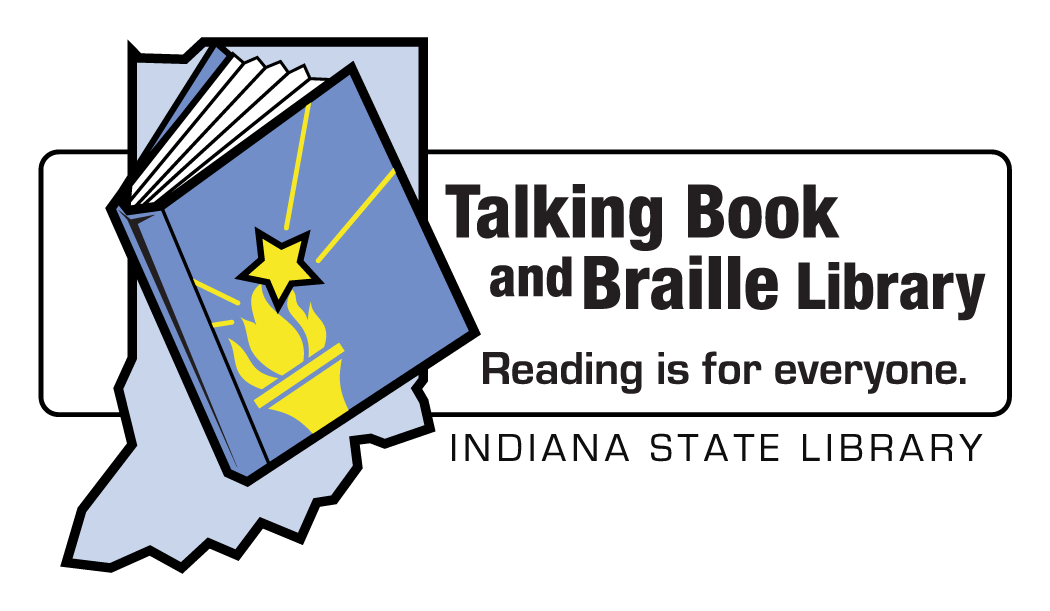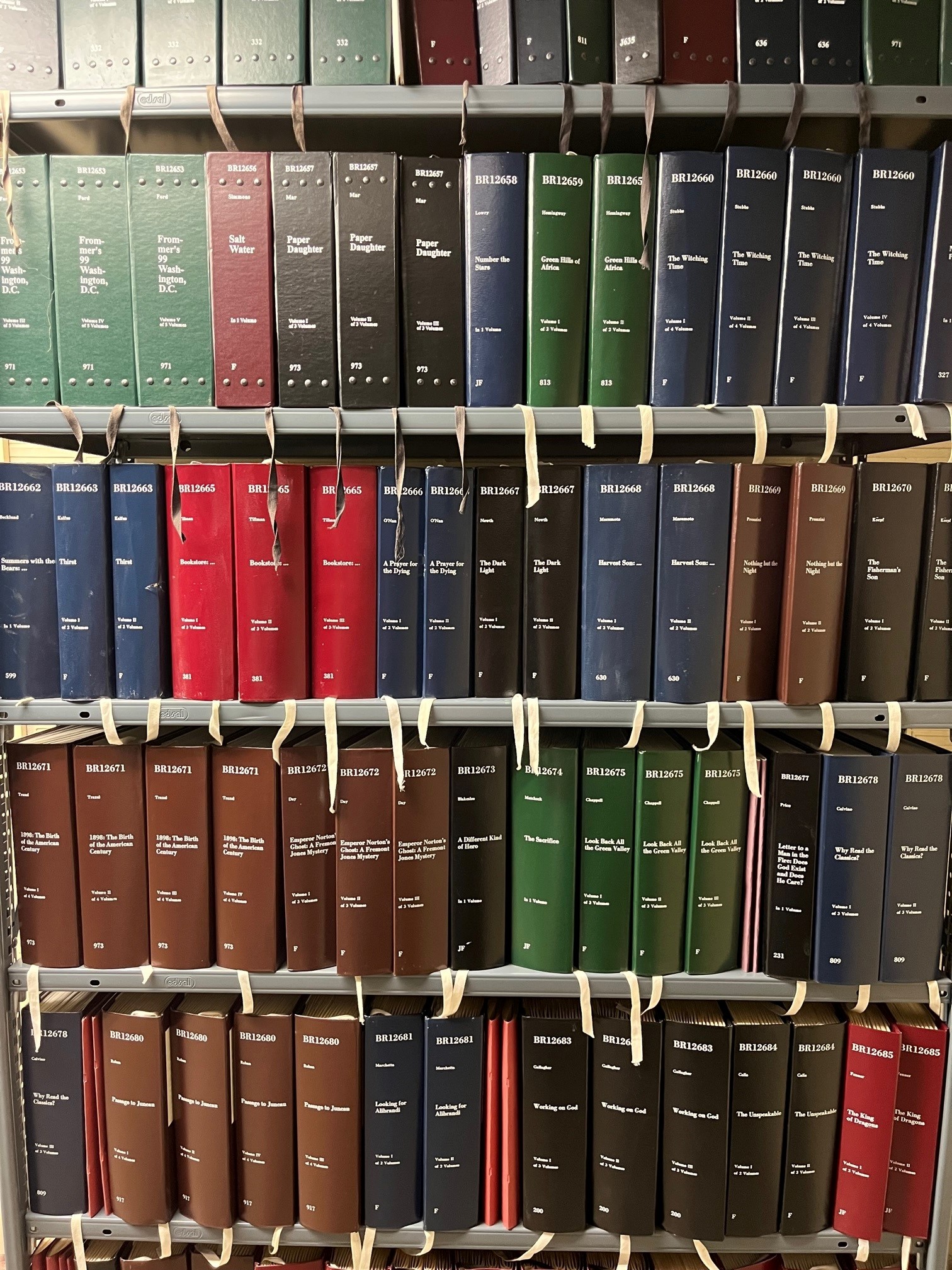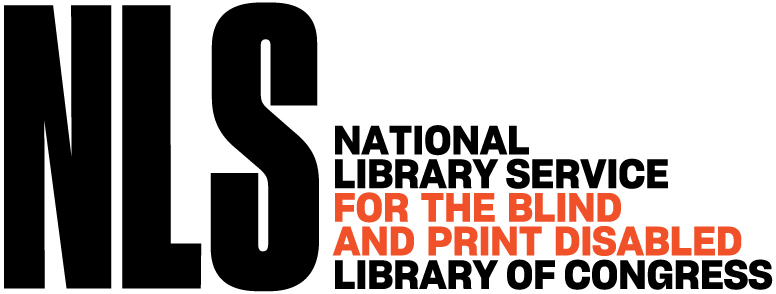The idea of a National Library Service for the Blind was first developed in 1897 by John Russell Young, the Librarian of Congress. He created a Braille Reading Room in the Library of Congress containing 500 items, including books and music scores. The Indiana State Library was not far behind in developing a library collection for the blind. Today, the collection is known as the Indiana Talking Book and Braille Library.
 In 1905, the Indiana State Library began mailing embossed books to blind residents throughout the state. At the time, the library’s collection consisted of 300 volumes, 200 of which had been donated by blind people throughout the state who were eager to establish a library. This original collection of books began circulating on Oct. 1, 1905.
In 1905, the Indiana State Library began mailing embossed books to blind residents throughout the state. At the time, the library’s collection consisted of 300 volumes, 200 of which had been donated by blind people throughout the state who were eager to establish a library. This original collection of books began circulating on Oct. 1, 1905.
One day per month, books were sent to patrons throughout the state by the loan division of the State Library. The collection was slow to grow at this time as braille was not yet the standard method of embossed print; it was mostly able to grow through gifts and hand transcribing projects undertaken by volunteers such as the Junior League.
 In 1931, President Herbert Hoover signed into law the Pratt-Smoot Act, which established the National Library Service for blind adults administered by the Library of Congress. They started out with 15 braille titles, the first of which was Woodrow Wilson’s biography of George Washington. Eighteen libraries were also initially selected to serve as regional libraries to better serve people through the country. In 1934, thanks in large part to the existing program that the Indiana State Library was offering, and the support around the state the program had, the Indiana State Library was selected to join the National Library Service as a regional library.
In 1931, President Herbert Hoover signed into law the Pratt-Smoot Act, which established the National Library Service for blind adults administered by the Library of Congress. They started out with 15 braille titles, the first of which was Woodrow Wilson’s biography of George Washington. Eighteen libraries were also initially selected to serve as regional libraries to better serve people through the country. In 1934, thanks in large part to the existing program that the Indiana State Library was offering, and the support around the state the program had, the Indiana State Library was selected to join the National Library Service as a regional library.
The following year, 27 book titles – including the four Christian gospels, historical documents and a variety of Shakespeare’s works – were made available on long-playing records. Patrons wishing to listen to these titles needed to buy their own phonograph. Records in various forms would continue to be used for more than 50 years. The National Library Service added service to children in 1952 and to people with physical disabilities and reading disabilities in 1966. Talking book formats have changed from records to flexible discs to cassettes in 1968 and in 2009 to digital books, download on demand, and downloadable media for braille e-readers and cellphones. The Library also includes large print titles and braille books.
However, the mission and goals of the program have remained the same, to provide library materials to those people unable to use standard printed materials. In 2019, the National Library Service was renamed the National Library Service for the Blind and Print Disabled.
Learn more about the National Library Service for the Blind and Print Disabled here, and learn more about the Indiana Talking Book and Braille Library here.
This blog post was written by the past and present staff of the Talking Books and Braille Library. For more information, contact the Talking Books and Braille Library at 317-232-3684 or via email.

